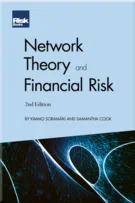Managing Stakeholder Expectations
Sandra Dow
Managing Stakeholder Expectations
Introduction
Reputational Risk: A Short Introduction
What History Teaches Bankers about Reputation Management
An Asset–Liability View of Banks’ Reputation
Reputational Risk in the Universe of Risks: Boundary Issues
Corporate Governance Changes Following Reputational Damage in the Financial Industry
Reputational Risk and Prudential Regulation
Managing Stakeholder Expectations
Environmental and Social Risks from the Perspective of Reputational Risk
The Relationship between Reputational Risk Management and Business Continuity
Tracking Reputation and the Management of Perception at UniCredit
Successful Recovery from Reputational Crises: Legitimate versus Illegitimate Risk Case Studies
Reputational Risk Management Across the World: A Survey of Current Practices
Governance as the Starting Point for a Reputational Risk-Management Process
Managing Reputational Risk in a Major European Banking Group
The Implementation of the UniCredit Group Approach
Promotional Banks: An Introduction to Reputational Risk Management
Reputational Risk Management in a Global Insurance Company
Reputational Consequence Management: The Future
Introduction
The 2008 financial crisis shook the global financial system and arrested economic growth. At the epicenter of the financial crisis were the too-big-to-fail financial institutions (TBTFs), which included AIG, Lehman Brothers, Merrill Lynch, Bear Stearns, Countrywide Financial, JPMorgan Chase, Bank of America, Citigroup, Wells Fargo, State Street, Goldman Sachs, Bank of New York Mellon and Morgan Stanley. In this chapter we explore whether these TBTFs met stakeholder expectations in the period preceding the crisis, at the crisis and during the post-crisis fallout. We argue that the failures in corporate governance in the financial services sector that led to excessive risk taking seem to have spilled over to treatment of other stakeholders.
Banks11We use “banks” and “financial services” interchangeably. are financial intermediaries and this intermediation function exposes them to an array of significant stakeholder issues likely unparalleled in other industries. One perspective could suggest that, since they are intermediaries, the reputations of these stakeholders may be as critical to the reputation of the bank as those reputational issues that may be internally
Copyright Infopro Digital Limited. All rights reserved.
As outlined in our terms and conditions, https://www.infopro-digital.com/terms-and-conditions/subscriptions/ (point 2.4), printing is limited to a single copy.
If you would like to purchase additional rights please email info@risk.net
Copyright Infopro Digital Limited. All rights reserved.
You may share this content using our article tools. As outlined in our terms and conditions, https://www.infopro-digital.com/terms-and-conditions/subscriptions/ (clause 2.4), an Authorised User may only make one copy of the materials for their own personal use. You must also comply with the restrictions in clause 2.5.
If you would like to purchase additional rights please email info@risk.net








